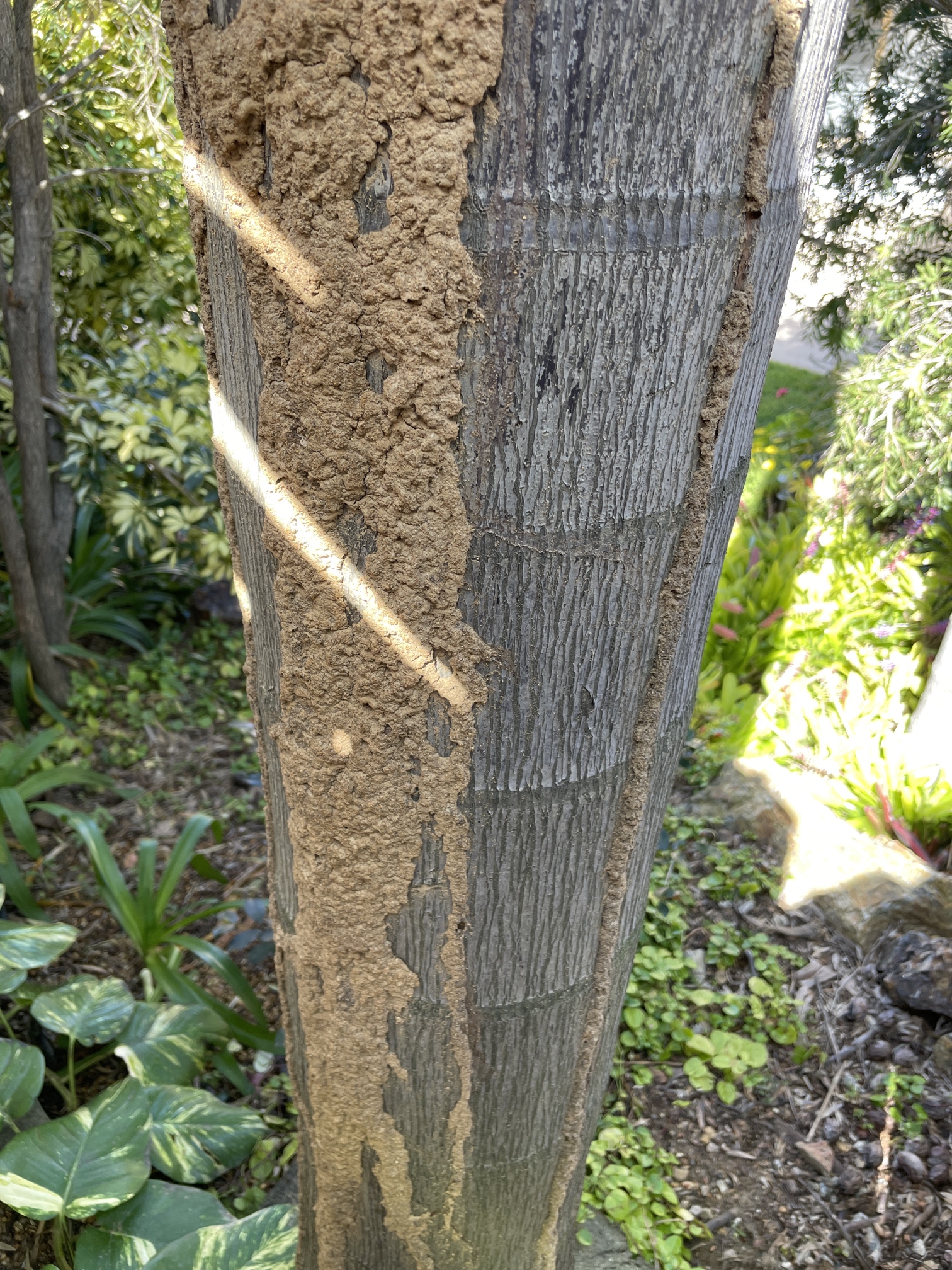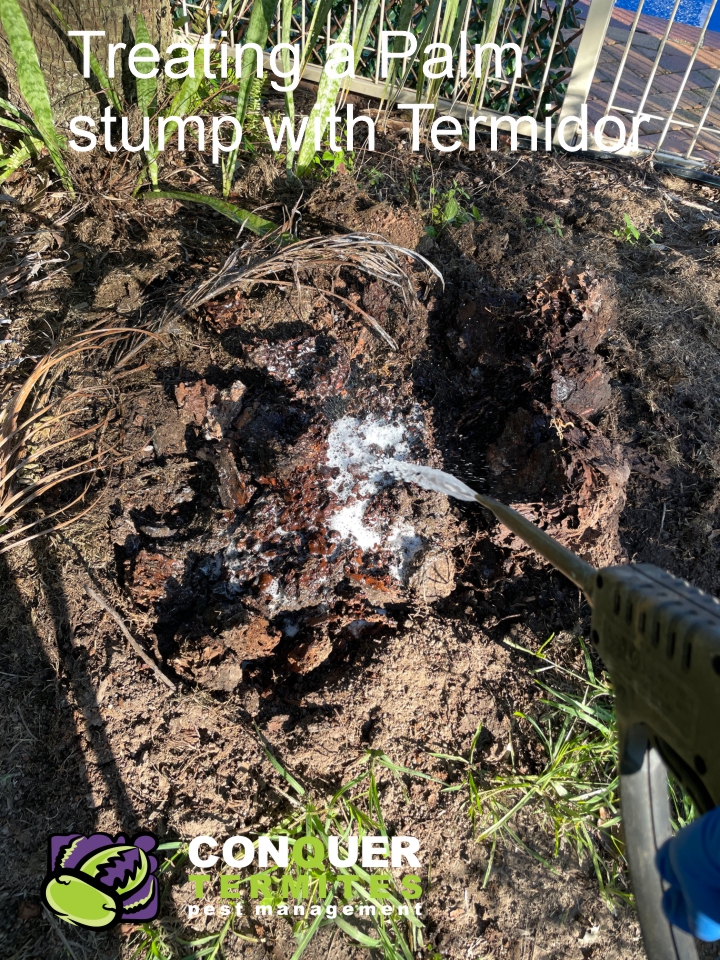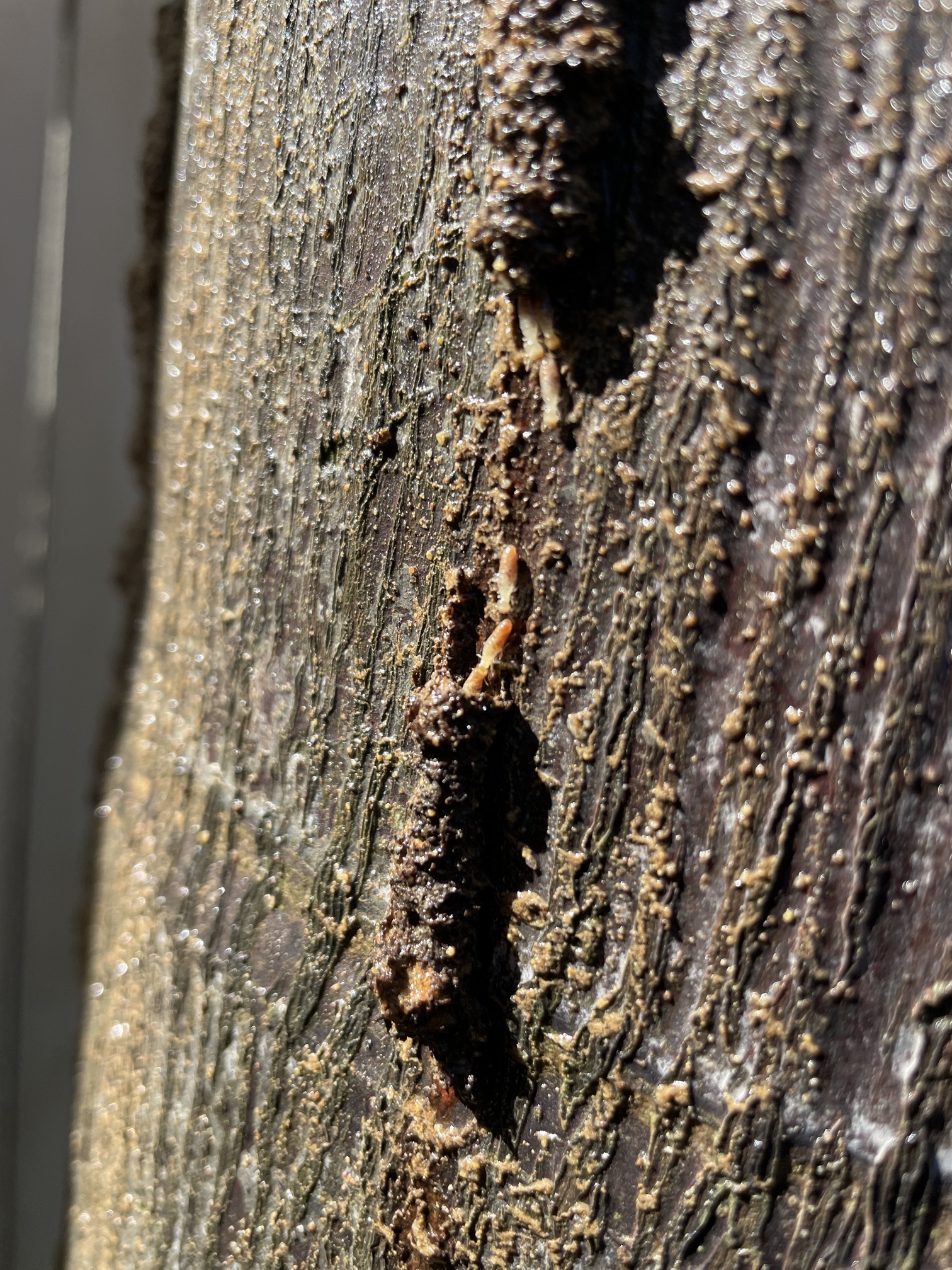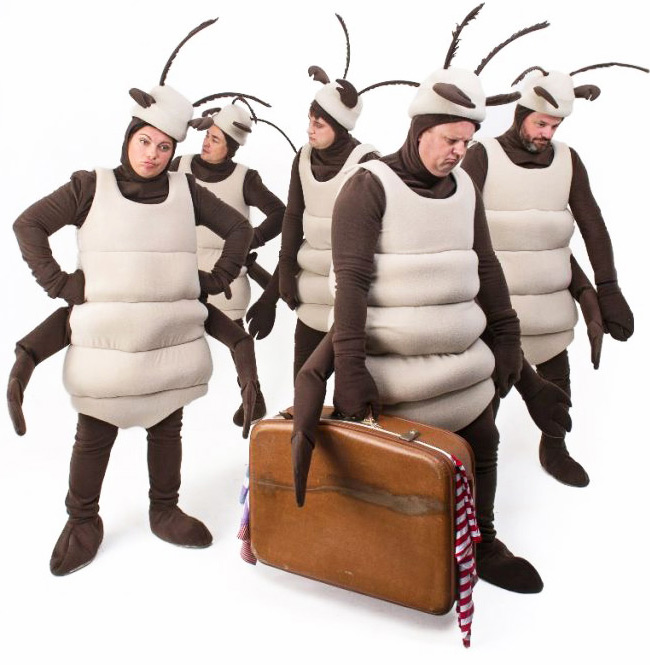Termites do attack Palm trees.
Yes, termites can attack palm trees and, in some cases, cause significant damage. Palm trees, like other woody plants, are susceptible to termite infestations. It is also a sign that a termite nest is near your home!
The interesting thing about termites eating palm trees is that they normally only eat the timber on the outside as the internal core is inedible when in growth. In contrast, with eucalyptus trees, termites eat the middle first.
Termites in a Palm Tree in Brisbane
Recently a customer reported that they found a subterranean termite “lead” travelling up one of their Palm tree stumps on a property in Brisbane. This is not uncommon in the South East Queensland area, where there are a lot of palm trees and an abundance of termites.

But to find such a large lead was a bit unusual. Usually, the termite infesting Palm trees comes from smaller colonies, such as Microerotermes or Heterotermes. Their leads are thinner and paler in colour. This lead came from a Nasutitermes nest, originating from a nest in a nearby gum tree.
Termites continuously forge for food.
Termites search for anything that contains edible cellulose. The stems of most plants are made of cellulose. Some termites attack grass and other small plants. However, most termites attack large plants, like gum trees and sometimes Palm trees. As termites forage in the ground, they usually invade trees through the roots. However, sometimes termites make a dirt tunnel up the side of the tree. The termites move from the dirt tunnels and invade the trees through the bark.
Termites can damage a healthy tree.
Termites weaken the tree when they hollow it out. When there is a severe storm, the high winds often blow down the damaged trees. The falling trees often cause damage when they land on homes and cars. Sometimes falling trees also injure people. It’s a little unknown fact that if a tree on your property has live termites and falls onto a neighbour’s house, fence or car, you are not covered by insurance in Australia.
Should I do something about treating a tree?
An Arborist can make suggestions on repairing damaged trees. These specialists can make recommendations on strengthening the tree. However, if the tree has been damaged too severely, the arborist might recommend removing it.

We would typically rod around the tree’s base with the non-repellent transfer poison, Termidor. But you’ll need to get a licensed pest controller to treat the live termites before the Arborist can do anything. Read more helpful information on our “How to treat a Tree” page.
If you are concerned about your Palm trees or termites, call us on 1300 417 007.




